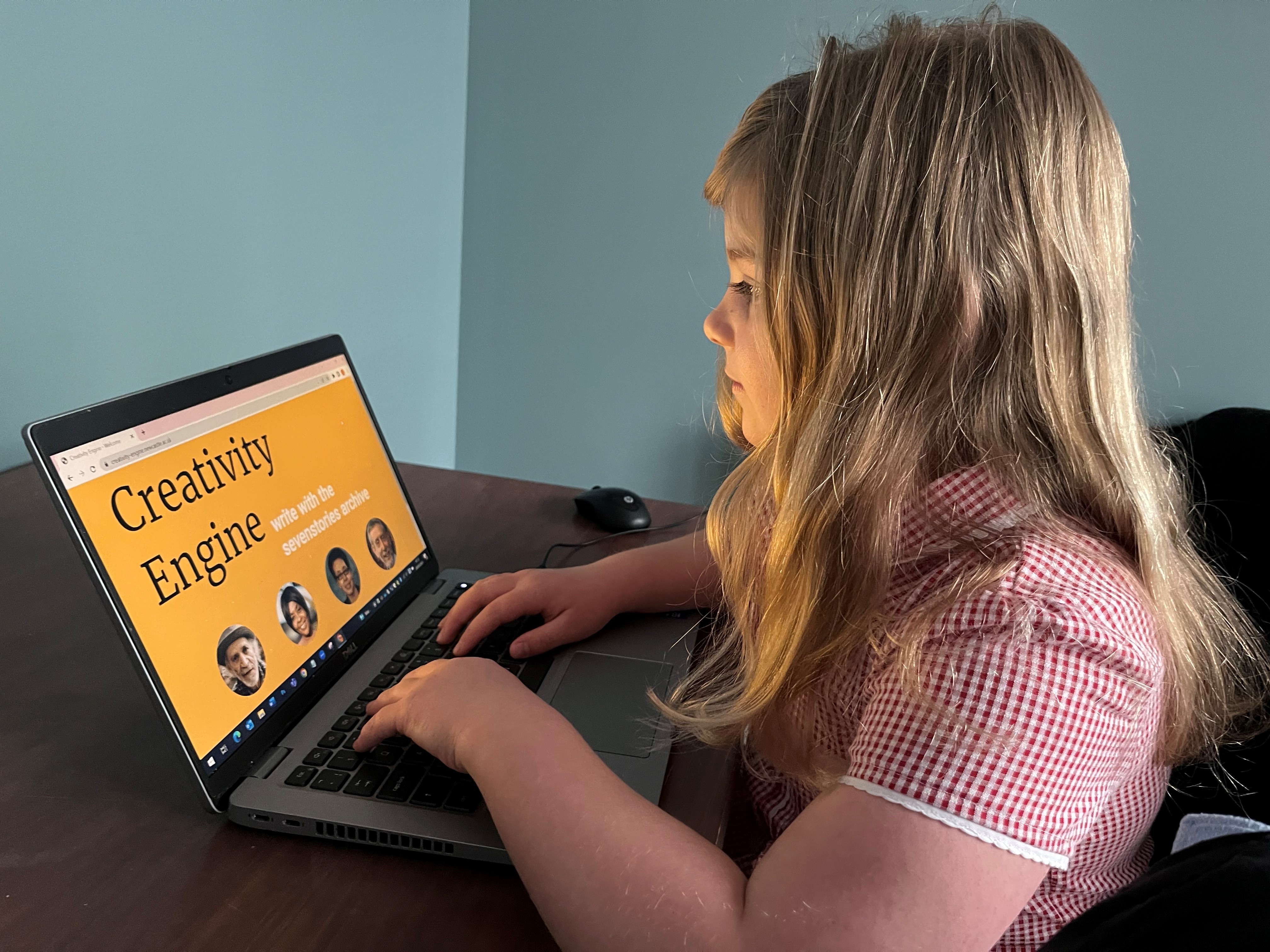
Artificial Intelligence (AI) and machine learning tools are changing the way children and adults interact with technology. Newcastle University and Seven Stories have worked together to launch a new AI platform, the Creativity Engine, to support children’s creativity.
The rise and rise of intelligent technologies
With OpenAI’s artificial intelligence chatbot ChatGPT reaching over 100 million users in its first two months after launching in December 2022, it’s clear that AI take-up is increasing rapidly in 2023.
As AI tools are becoming publicly accessible, new sectors are starting to consider ways of using and responding to them. Schools and educational settings are teaching a generation of children and young people who will be growing up with these new technologies, and AI has the potential to transform learning and teaching in the humanities.
The Creativity Engine
Newcastle University and Seven Stories: the National Centre for Children’s Books have been working together to create a new AI tool, the Creativity Engine.
The Creativity Engine is a web application leveraging the latest technology in text-generating artificial intelligence to encourage children and young people to kickstart and explore their own literary creativity.
An interdisciplinary approach
The development of the Creativity Engine has brought together science and humanities researchers and practitioners, including research software engineers, literary scholars, archivists, curators, and mathematicians.
Through this project, we’ve been exploring ways to apply and develop cutting-edge AI and machine learning methods to fields that are sometimes left out of the digital revolution: children’s literature, literary creation, archival research, and discoverability.
New ways of exploring archives
The Creativity Engine tool has been trained on a range of archival materials from the Seven Stories collection. This included draft manuscripts from several children’s writers, such as Michael Rosen, John Agard and Valerie Bloom.
Learning from this material, the Creative Engine produces results that are inspired by these authors and offers a new way to explore children’s literature archives.

Using the Creativity Engine on a laptop to write a story
Creativity with AI
The Creativity Engine’s interface allows children and young people to develop their story collaboratively with the AI.
Children will take turns writing their story with the AI, and are able to save their finished result at the end of the process.
The Creativity Engine in educational settings
The idea for the project came from an experimental workshop with young writers during the COVID-10 lockdown periods. Early prototypes of the Creativity Engine were tested by schools and teachers through the English Association, who provided feedback to inform its development.
Now the tool is live, we’re planning to hold a webinar to launch this with the English Association and we’ve produced a resource pack with creative writing activities. We’ll also be exploring the tool with family audiences and running creative workshops for children.
Future-facing
Looking to the future, we’re interested to see the response to the tool and explore the questions it raises for data science, literature, and children’s research.
How can AI engage with archival datasets? Can an AI model pick up stories in the same way that a child reader can? And what makes children’s literature?
Try out the Creativity Engine for yourself, here.
You might also like:
- Try out the Creativity Engine
- Learn more about the project by reading the press release
- Find out more about the partnership between Newcastle University and Seven Stories
- Explore Newcastle University's School of Literature, Language, and Linguistics
- Visit Seven Stories, the National Centre for Children's Books
- Explore Seven Stories' archived collection
- Read more about ChatGPT
